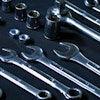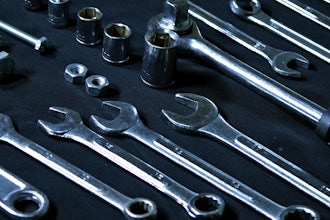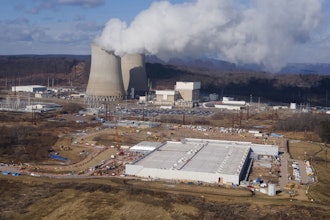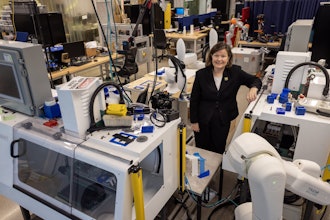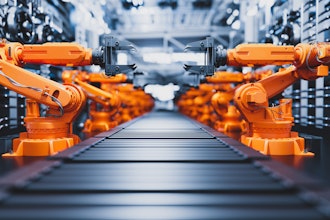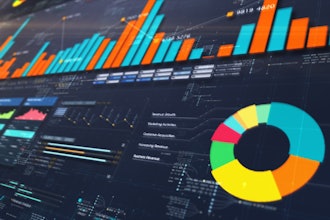
Wholesale distributors, the writing is on the wall: adapt to modern technology or risk losing your future workforce. The veterans who built the industry are fast approaching retirement, and their replacements have vastly different expectations about how work should get done.
The population is aging, with many working past the traditional retirement age. Employers need their skills and experience, and economic pressures keep them working. Low birth rates have produced a demographic shift, creating employment gaps for women, immigrants, and underrepresented workers to advance.
The U.S. Bureau of Labor Statistics expects warehousing jobs will grow by 8%, adding almost 600,000 new positions by 2032. Finding and recruiting the skills and talents needed, wholesale distributors have a few lessons to learn if they expect to survive next-gen distribution.
"The pace of technology continues to accelerate," noted one distribution leader. "Companies can choose to keep up, or they will be left behind. Those left behind will have lower profits and attract lower talent, perpetuating a self-fulfilling downward spiral."
Let's cut through the noise and examine exactly what this means for your business–and more importantly, what you can do about it.
The Generational Tech Gap: More Than Just Preferences
Millennials have entered middle age. Members of Gen Y show ambition and restlessness. Gen Z brings anxiety and impatience with legacy practices. The youngest workers expect businesses to align with their personal beliefs and to impact the environment. They also rate employers according to their embrace of technologies.
Today's emerging workforce has only known a world with smartphones, instant messaging, and one-click ordering. This isn't just about preferences; it's about fundamental expectations of a business' operation.
For example, while many distributors still rely on phone calls, emails and manual order entry, younger workers see these methods as painfully outdated. Farmington Group published the results of a survey of nearly 30,000 plumbing and mechanical and industrial/mechanical pipe, valves, and fittings contractors in 2023. Results showed significant shifts in buying behaviors.
Most contractors still place orders over the phone; however, younger contractors place orders through the distributor’s mobile app or website. Younger contractors make 15% of their buys via digital channels compared to the 7% placed by older contractors.
We can’t minimize these shifts as incremental tweaks. They show a basic turning, a generational move affecting commerce from producer to user. Leading distributors have moved ahead of these trends. They have acted on Farmington Group’s direction to invest “in documentation technologies to a) gain efficiencies, b) get out of manually processing transactions, and c) reduce time being spent on non-revenue generating activities.”
Distributors who find themselves late to the race must act now. Your next-gen executives, managers, and staff see no strategy in playing tortoise to the hare.
3 Technology Pillars for the Modern Distributor
Text messaging has rapidly surpassed emails as a marketing tool. SMS connections outperform emails in open rate, read rate and conversion rate. Distributors should let Gen Y and Z reverse mentor. They should listen to inputs that contractors prefer sending orders by text messages rather than phone calls and that manual order entry takes up to 30 minutes per order.
The business impact is clear. Distributors clinging to traditional methods will see:
- Reduced productivity due to outdated processes
- Higher error rates from manual entry
- Increased customer frustration with slower response times
- Difficulty attracting and keeping promising talent
1. Communication and Collaboration
The foundation of any modern distribution operation starts with how your team communicates. Traditional phone systems and email aren't enough anymore. Your technology stack must include:
- Text-enabled business lines that allow quick customer communication
- Cloud-based systems that enable remote access and collaboration
- Mobile-first solutions that work as well in the field as they do in the office
CIO reported that one distributor realized a “40% increase in order accuracy and input speed,” after opting for an AI-driven, cross-function, order management system. The option increased sales and customer satisfaction. You agree that “outdated technology is the foundation for out-of-step workflows. Manual processes make everyone who touches order management and fulfillment work harder than they need to.”
2. Operations and Efficiency
Multiple forces pull on distribution. Distributors wait on supplier deliveries, and buyers expect fulfillment as promised. Each buy-sell transaction requires speed, but speed differs from efficiency.
Distributors focus on seamless processes, keeping the wheels turning without friction. However, a smooth operation does not ensure consistent profits or scalability. Leading distributors focus on efficiency. In today’s business climate, success means implementing:
- Cloud-based ERP systems that centralize your data and operations
- E-commerce platforms that enable 24/7 ordering
- Automated order processing that eliminates manual entry
- AI-powered pricing optimization tools
Leading distributors have welcomed these initiatives, but mid-sized wholesalers take more convincing. They are often determined to avoid fixing “what ain’t broke.” I have found that a significant return on investment is very persuasive.
The ROI here is substantial. Companies implementing sales order automation have seen a 70% decrease in order cycle time and an 80% reduction in processing costs. More interesting, they saw 15-30% of sales and service reps’ time freed up to let them work on higher-value tasks.
NAW argues, “If you’re not adopting AI because you’re concerned you won’t get ROI or you’re waiting for the technology to mature, stop procrastinating. You already have the data.”
3. Customer Experience
Businesses have long depended on relationships. Deals have closed with handshakes. Sales and Marketing people build trust with expertise and amiability. Individual salespeople and CSRs “own” their relationships and anticipate their customers’ needs. But times and customers have changed.
Contractors once enjoyed a 15-minute phone call, chatting about family, sports, and the state of the union. However, younger contractors prefer a 15-second text. They relate to devices and technology.
- Self-service ordering platforms
- AI-based product recommendations
- Real-time inventory visibility
- Mobile-friendly interfaces
The talents you want to recruit and retain, train and grow, and contribute and collaborate expect to do business on a smartphone. One $400 million distributor saw a $10 million revenue lift in just 12 months after implementing AI-based recommendation engines–proving that better customer experience directly impacts the bottom line.
3 Steps to Digital Transformation
Distributor decision-makers must drive change if they expect to compete and grow. Economic, social, and other factors have reshaped the next-gen workforce. The next-gen talent pool has new values and a new sense of work and workplace, requiring a practical approach to making the digital transformation.
1. Start with Assessment
Before making any changes, understand where you stand with a due diligence analysis of your current status:
- Audit your current technology stack.
- Survey your employees about problems and wishes.
- Analyze where manual processes are slowing you down.
- Identify your most critical technology gaps.
2. Prioritize Your Investments
Focus on technologies that deliver the highest ROI first. Harvard Business Review research found that “a 1% improvement in price, assuming no loss of volume, increases operating profit by 11.1%.” Sales order automation reduced costs by as much as 80%, and world-class communication platforms produced efficiency gains immediately.
3. Structure Change Management
Technology implementation fails without proper change management. You’ll need full buy-in from all the stakeholders. Here's what works:
Cross-generational implementation teams
- Pair tech-savvy younger workers with experienced veterans.
- Let each group learn from the other's strengths.
- Ensure a psychologically safe environment.
Phased rollouts
- Start with pilot programs.
- Gather feedback and adjust.
- Scale successful implementations.
Continuous training
- Schedule regular training sessions.
- Encourage written documentation.
- Select video tutorials for different learning styles.
Future-Proof Your Distribution Business
A distributor’s leadership must invest in continuity. Digital transformation is not “a one-off” event. Agile leadership and management must understand how change reimagines, reshapes, and redirects its behavior.
Transformation requires willingness, resilience, and community. It needs a continuously responsive 3-5 year technology roadmap. You’ll need a dynamic budget with buffers for regular updates and improvements. You must structure the organization and its culture to pivot towards emerging technologies like AI and automation.
Modern technology creates lasting advantages for distributors. Advanced technologies increase productivity, improve inventory management, and optimize pricing. They also attract and keep talent that offers a competitive edge, ensuring:
- Faster customer response times
- More accurate order fulfillment
- Better inventory management
- Improved employee satisfaction
- Higher profit margins
Taking Action Now
The distribution industry stands at a crossroads. Companies that embrace technology not just as a tool, but as a fundamental way of doing business will thrive. Here's your action plan:
This Month:
- Assess your current technology stack.
- Identify your biggest problems.
- Survey your employees and customers.
Next Quarter:
- Select and implement one high-impact technology.
- Develop your training program.
- Measure results and ROI.
This Year:
- Roll out your complete technology roadmap,
- Build your talent pipeline,
- Monitor and adjust based on results.
Remember, this isn't just about staying competitive–it's about building a business that will attract and retain the next generation of distribution talent. The technology gap isn't going away, but with thoughtful implementation and a commitment to modernization, you can turn it into a competitive advantage.
Your future workforce is tech-savvy. efficient, and expects modern tools to do their jobs. The question isn't whether to adapt, but how quickly you can make the change. The distributors who act now will have their pick of top talent and position themselves for sustainable growth in an increasingly digital world.
The time for waiting is over. Your future workforce is ready for modern tools–is your business ready to provide them?
Nelson Valderrama is the CEO of Intuilize.

